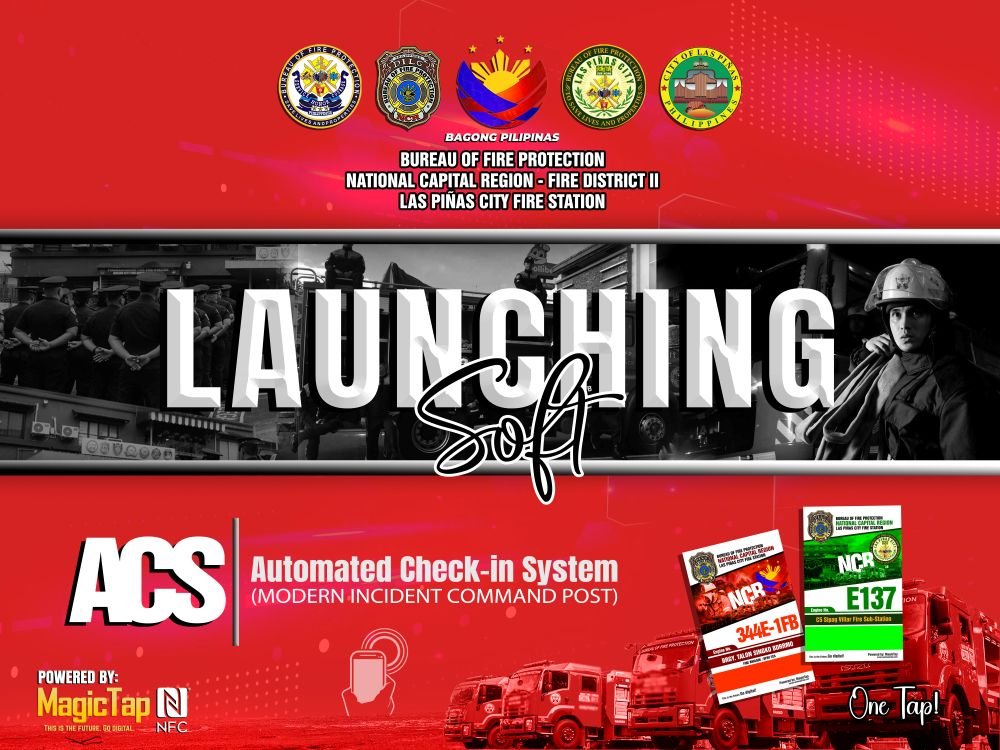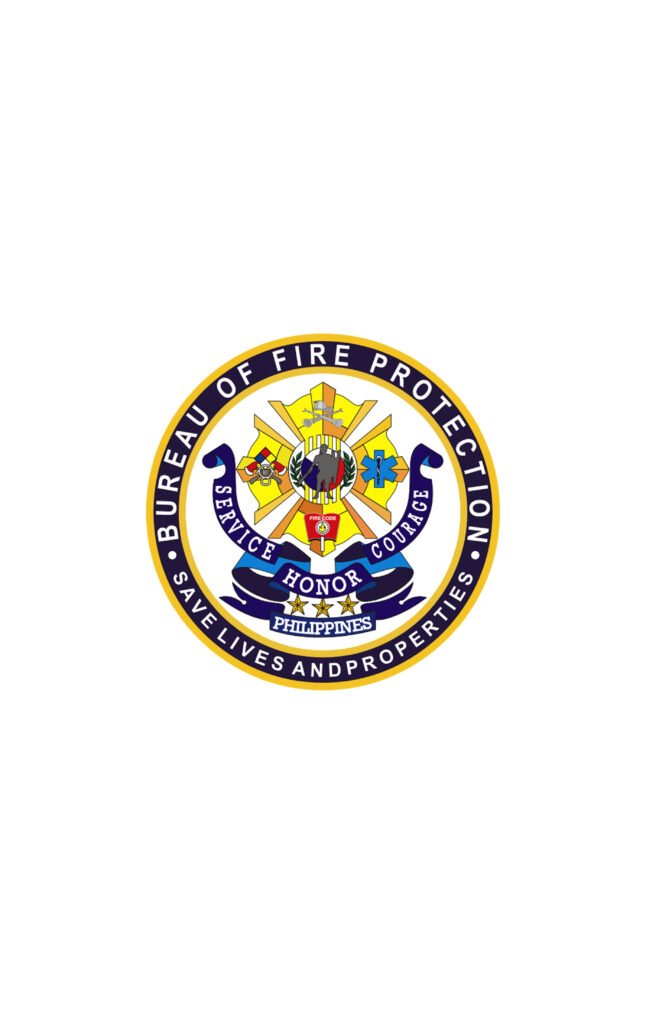ACS (Automated Check-In System)

Note: This Tarpaulin layout was used during the soft lauching of ACS.
I. RATIONALE
Efficient personnel and asset monitoring are critical in fire and emergency operations. The traditional paper-based attendance and response logging system is prone to human error, delays, and a lack of real-time tracking—posing a risk during fire suppression and disaster response.
The Automated Check-In System (ACS) is a digital solution that utilizes NFC technology and a web-based dashboard to automate the check-in, deployment, real-time monitoring and post-operation reporting. This initiative ensures faster, accurate, and transparent information flow among command centers and responding teams, particularly during high-alarm incidents.
II. OBJECTIVES
General Objective:
To implement a real-time, technology-driven check-in system that improves personnel accountability and operational coordination during emergency incidents personnel and asset monitoring.
Specific Objectives:
- Automate the check-in/check-out process for all responding units.
- Enable centralized real-time tracking of deployed personnel, equipment, and fire incident data.
- Provide accessible, paperless, and tamper-proof records.
- Generate automatic reports for faster documentation and evaluation.
- Support the BFP’s digital transformation and modernization objectives.
III. PROJECT SCOPE AND LIMITATIONS
Scope:
- Applicable to fire trucks, ambulances, and service vehicles.
- Real-time check-in via MagicTap NFC cards and mobile/web interface.
- Live dashboard access for BFP Headquarters, Regional and City Command Centers.
- Operational tracking from alarm receipt to fire out and post-incident reporting.
Limitations:
- Requires internet connectivity for live dashboard updates.
- Dependent on availability of NFC-enabled devices (smartphones/tablets).
- Initial training for admin users (Commel) and unit responders is required.
IV. SYSTEM FEATURES AND PROCESS FLOW
- Pre-Operation Planning
- Admin Account Creation
– Each responding unit is assigned a unique account.
- User Profile Update
– Includes unit information, personnel, and equipment (per response vehicle)
- MagicTap Card Issuance- NFC-powered cards are distributed per vehicle.
- During Operation
- Fire call logged by admin (Commel).
- Departure and arrival times recorded by users.
- Dashboard reflects incident updates.
- Incident Command Post setup.
- Real-time check-in using MagicTap.
- Dashboard displays live data: responders, assets, equipment.
- After Operation
- Units check out.
- Auto-generation of preliminary incident reports.
V. IMPLEMENTATION
- System Design and Development
- Equipment Procurement
- Pilot Testing
- User Training
- Deployment
- Monitoring and Evaluation
VI. EQUIPMENT NEEDED
- Tablets / Laptops
- NFC Phones / Readers
- MagicTap Cards
- Software Development & Hosting:
- Printer & Network Setup:
- Training & Documentation:
VII. SUSTAINABILITY AND MAINTENANCE
- Regular system updates and database backups
- Designated system admin personnel
- Integration with BFP platforms and response systems
- Continuous feedback-driven enhancements
VIII. CONCLUSION
- The Automated Check-In System (ACS) is a critical innovation for the Bureau of Fire Protection, bridging operational efficiency with technological advancement. It ensures real-time personnel tracking, accurate data recording, and faster decision-making. With ACS, the Fire Bureau enhances its service delivery, transparency, and readiness for any emergency.




